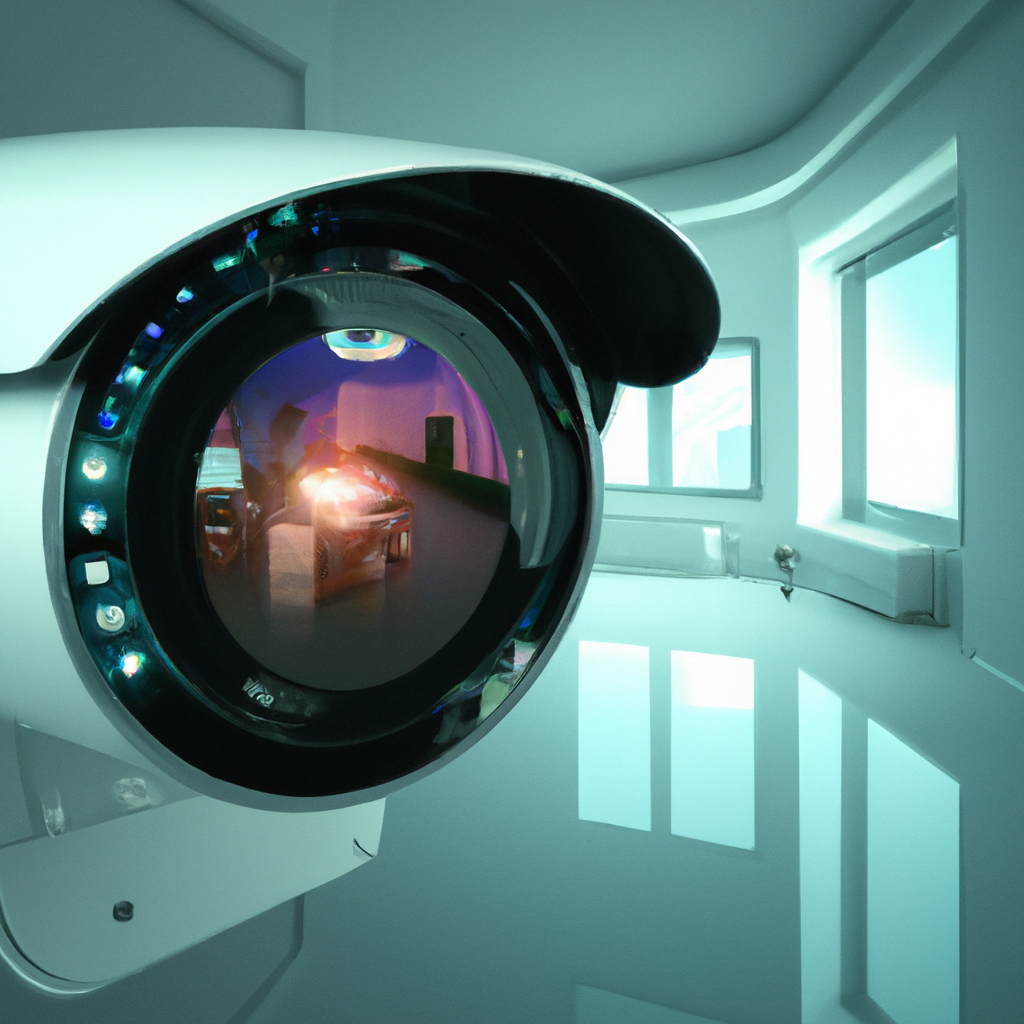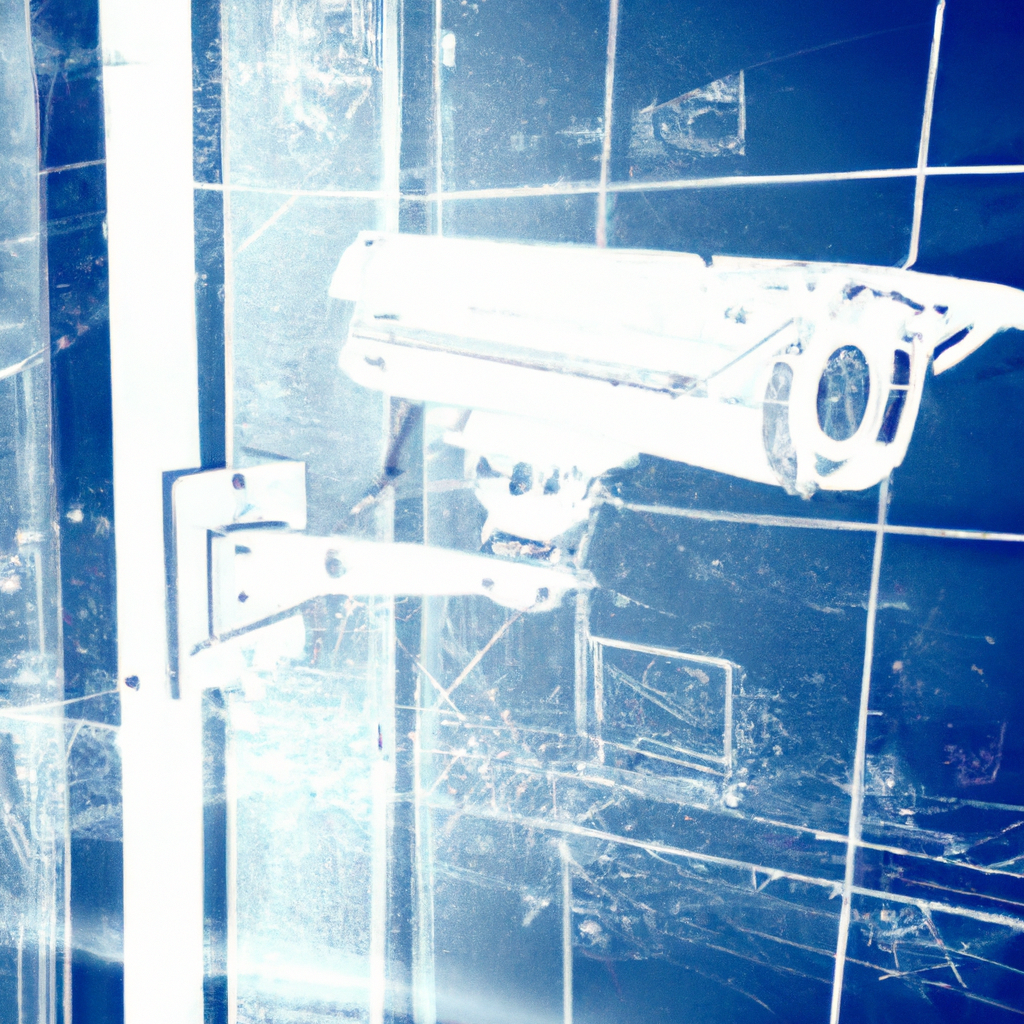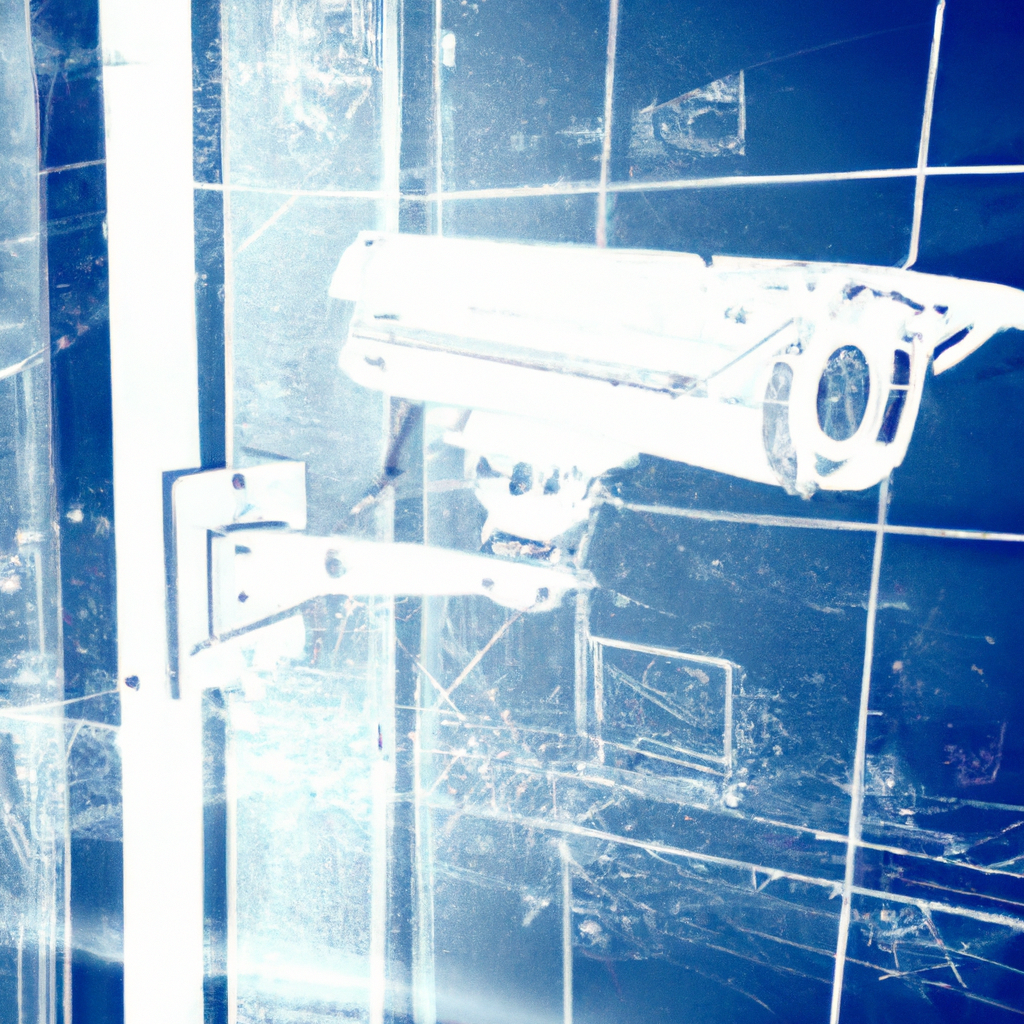So you’ve recently joined the smart home automation trend, investing in cutting-edge devices that effortlessly connect and manage various aspects of your home. They offer convenience, increased security, and ultimate control at the touch of a button. But have you ever stopped to think about the privacy implications of integrating these devices into your daily life? As our homes become smarter, so too does the need to understand the potential risks and safeguards in order to maintain the privacy and security of our personal information. In this article, we will explore the various privacy considerations you need to be aware of when using smart home automation.

Understanding Privacy in Smart Home Automation
Introduction to Smart Home Automation
Smart home automation refers to the integration of technology and intelligent systems within a home to enhance convenience, efficiency, and security. With the advancement of Internet of Things (IoT) devices, homes are becoming smarter than ever before, with the ability to control various aspects such as lighting, heating, security systems, and entertainment devices with just a few taps on a smartphone or voice commands to virtual assistants like Amazon Alexa or Google Assistant. While smart home automation offers numerous benefits, it also raises important privacy concerns that must be addressed.
Importance of Privacy in Smart Home Automation
Privacy is a fundamental aspect of our lives, and it becomes even more crucial in the context of smart home automation. As our homes become more interconnected, an increasing amount of personal data is being collected, stored, and shared by these smart devices. It is vital to understand and prioritize the protection of this data to maintain our privacy and prevent unauthorized access or misuse.
Data Collection in Smart Home Automation
Types of Data Collected in Smart Home Automation
Smart home automation systems collect a wide range of data to perform their functions effectively. Some of the common types of data collected include:
- User preferences and settings: Smart home devices store information about user preferences such as preferred temperature, lighting levels, and entertainment preferences.
- Usage patterns: Smart devices track and analyze patterns of usage, such as when lights are turned on/off, when doors are opened/closed, or when appliances are used.
- Sensor data: Sensors installed in smart devices gather data about the environment, including temperature, humidity, motion, and sound levels.
Methods of Data Collection in Smart Home Automation
Data collection in smart home automation can occur through various methods, including:
- Sensor data: Smart devices equipped with sensors collect real-time data about the environment and user behavior.
- User inputs: User interactions with smart devices through apps, voice commands, or physical controls generate data that is collected and analyzed by the systems.
- Device-to-device communication: Connected devices within a smart home network can exchange data to enhance automation and coordination.
- Data from third-party sources: Some smart home systems integrate with external services or platforms, allowing the collection of additional data from sources such as weather forecasts or energy usage statistics.
Data Storage in Smart Home Automation
Types of Data Stored in Smart Home Automation
Smart home automation systems must store a considerable amount of data to provide personalized and efficient services. Some of the types of data that are typically stored include:
- User profiles: Information such as names, email addresses, and device preferences are stored to ensure personalized experiences and user identification.
- Historical data: Smart home systems retain historical data about device usage, sensor readings, and patterns of behavior to optimize automation algorithms and provide insights.
- Device configurations: Settings and configurations of devices, such as preferred temperature or lighting schedules, are stored to ensure consistency across smart home devices.
Security Measures for Data Storage in Smart Home Automation
To protect the stored data from unauthorized access or breaches, smart home automation systems implement various security measures, including:
- Encryption: Sensible data is encrypted using robust encryption protocols to ensure that even if the data is intercepted, it remains unreadable without the decryption key.
- Access control: Access to stored data is restricted, and strong authentication mechanisms are implemented to ensure that only authorized individuals can access and modify the data.
- Secure communication protocols: Smart home systems utilize secure communication protocols, such as Transport Layer Security (TLS), to encrypt data in transit between devices and remote servers.
- Data backup and recovery: Regular backups are performed to prevent data loss and facilitate recovery in the event of a system failure or breach.
Data Sharing in Smart Home Automation
Reasons for Data Sharing in Smart Home Automation
Data sharing is an integral part of smart home automation systems and can occur for various reasons, including:
- Interoperability: Sharing data between different smart devices and platforms enables seamless integration and coordination, allowing devices from different manufacturers to work together.
- Remote monitoring and control: Data sharing allows homeowners to monitor and control their smart home devices remotely, providing convenience and peace of mind.
- Third-party services: Some smart home systems integrate with third-party services, such as energy management or home security providers, enabling enhanced features and functionalities.
Potential Risks of Data Sharing in Smart Home Automation
While data sharing can bring about significant benefits, it also poses potential risks to privacy and security. Some of the risks associated with data sharing in smart home automation include:
- Unauthorized access: Sharing data with third-party services may increase the risk of unauthorized access or data breaches if proper security measures are not in place.
- Data aggregation and profiling: When data from multiple sources is combined, it can potentially be used to create detailed profiles and insights about individuals, raising concerns about privacy and surveillance.
- Lack of control: Data shared with third-party services may be subject to different privacy policies and practices, reducing the control homeowners have over their data.

Protecting Privacy in Smart Home Automation
Implementing Strong Authentication and Encryption
Ensuring the privacy and security of smart home automation systems begins with implementing strong authentication and encryption mechanisms. This involves:
- Strong passwords: Using unique and complex passwords for smart home devices and accounts helps prevent unauthorized access.
- Two-factor authentication: Enabling two-factor authentication adds an extra layer of security by requiring an additional verification step, such as a fingerprint scan or a unique code sent to a registered phone number.
- Secure encryption protocols: Implementing robust encryption protocols, such as AES (Advanced Encryption Standard), ensures that data stored and transmitted by smart devices remains secure and protected from unauthorized access.
Regular Updates and Patches for Smart Home Devices
Regular updates and patches are vital for maintaining the security and privacy of smart home automation systems. This includes:
- Firmware updates: Smart home devices should receive regular firmware updates from manufacturers, containing security patches and bug fixes to address vulnerabilities.
- App updates: Keeping smart home apps up to date ensures that any security vulnerabilities or weaknesses are promptly addressed.
- Automatic updates: Enabling automatic updates for smart home devices and associated software ensures that security patches are applied as soon as they become available, reducing the risk of exploitation.
Understanding Privacy Policies in Smart Home Automation
Importance of Privacy Policies in Smart Home Automation
Privacy policies play a crucial role in smart home automation, as they outline the practices and procedures followed by smart home system providers regarding the collection, use, disclosure, and protection of user data. Key points to consider include:
- Transparency: Privacy policies should clearly communicate how user data is collected, used, and shared by the smart home system.
- Consent: Users should be informed and given the choice to opt-in or opt-out of data collection and sharing practices.
- Data retention: Privacy policies should specify the duration for which data will be stored and outline procedures for data deletion.
Key Considerations in Privacy Policies for Smart Home Automation
Privacy policies specific to smart home automation should address the following key considerations:
- Data collection and usage: Policies should clearly outline the types of data collected, the purpose for which it is collected, and how it is used by the smart home system.
- Third-party sharing: If data is shared with third-party services, privacy policies should outline the types of data shared and the purposes for which it is shared.
- Security measures: Policies should detail the security measures implemented to protect user data, including encryption, access control, and secure communication protocols.

Legal and Ethical Considerations
Legal Frameworks for Smart Home Automation Privacy
Legal frameworks play a crucial role in protecting privacy in smart home automation. Key legal considerations include:
- General Data Protection Regulation (GDPR): The GDPR establishes guidelines and requirements for the collection, storage, and sharing of personal data within the European Union, including smart home automation systems.
- California Consumer Privacy Act (CCPA): The CCPA outlines privacy rights for California residents and imposes obligations on businesses, including those involved in smart home automation.
- Data breach notification laws: Many jurisdictions have laws mandating the notification of individuals in the event of a data breach.
Ethical Dilemmas and Sensitive Information in Smart Home Automation
Smart home automation raises ethical dilemmas, particularly when it comes to the processing of sensitive information. Some common ethical considerations include:
- Informed consent: Users should have a clear understanding of the data being collected and how it will be used, giving them the ability to make informed decisions regarding privacy.
- Purpose limitation: Smart home system providers should only collect data necessary for the intended purpose and refrain from processing sensitive information without explicit consent.
- User control: Users should have control over the data collected and be able to modify or delete their data as desired.
Balancing Convenience and Privacy
Trade-offs between Convenience and Privacy in Smart Home Automation
Balancing convenience and privacy is essential in smart home automation. While smart devices offer numerous conveniences, they may require trade-offs in terms of privacy. Some trade-offs to consider include:
- Data sharing with third parties: Sharing data with third-party services may enhance functionality and convenience but can pose risks to privacy.
- Data storage: Storing data for personalized experiences and historical analysis improves convenience but increases the amount of potentially sensitive data in the system.
Strategies for Balancing Convenience and Privacy
Strategies for achieving a balance between convenience and privacy in smart home automation include:
- Privacy settings and preferences: Smart home systems should provide granular privacy settings that allow users to choose the level of data sharing and retention that they are comfortable with.
- Transparent data practices: Clear and concise information about data collection, usage, and sharing practices should be provided to users, enabling them to make informed decisions.
- Privacy-enhancing technologies: Utilizing technologies such as differential privacy, which adds noise to data to protect individual privacy while still enabling data analysis, can strike a balance between personalization and privacy.

Minimizing Privacy Risks in Smart Home Automation
Auditing and Monitoring Internet of Things (IoT) Devices
To minimize privacy risks, regular auditing and monitoring of IoT devices within a smart home automation system is crucial. This involves:
- Periodic vulnerability assessments: Regular vulnerability assessments should be performed to identify potential weaknesses or security flaws in smart devices.
- Network monitoring: Monitoring network traffic can help detect any suspicious activity or unauthorized access attempts, allowing prompt action to be taken.
- Firmware and software updates: Keeping devices up to date with the latest firmware and software releases ensures that known vulnerabilities are patched.
Limiting Third-Party Access to Smart Home Data
To enhance privacy, it is important to carefully manage third-party access to smart home data. Measures to limit access include:
- Data anonymization: Prior to sharing data with third parties, personal identifiers should be removed or masked to protect individual privacy.
- Data usage agreements: Clear contracts or agreements should be established with third-party service providers, outlining the purpose for which data will be used and specifying limitations on data retention and sharing.
Consumer Education and Awareness
Educating Consumers about Privacy in Smart Home Automation
Educating consumers about privacy considerations in smart home automation is vital to promote responsible use and protect their rights. Key aspects to address in consumer education include:
- Data collection and usage: Consumers should be educated on the types of data collected, how it is processed, and the potential implications for their privacy.
- Rights and remedies: Consumers should be informed about their rights under privacy laws and provided with resources to seek redress in case of privacy violations.
- Best practices: Educating consumers about best practices, such as using strong passwords, updating firmware, and being cautious about third-party data sharing, helps them make informed decisions to protect their privacy.
Promoting Best Practices for Smart Home Privacy
Promoting best practices for smart home privacy can empower consumers to take proactive steps to safeguard their privacy. Some best practices to promote include:
- Regularly review and update privacy settings: Encourage users to review and update their privacy settings for smart home devices and applications to align with their preferences.
- Be cautious about data sharing: Advise users to be mindful of the data they share with third-party services and consider the privacy practices of those services before granting access.
- Stay informed and updated: Encourage users to stay informed about the latest privacy threats, vulnerabilities, and best practices through reliable sources and industry publications.
In conclusion, understanding privacy in smart home automation is of utmost importance to protect personal data and maintain control over our homes and lives. By implementing strong security measures, transparent privacy policies, and promoting consumer education, we can strike a balance between convenience and privacy while reaping the benefits of smart home automation. It is essential for smart home system providers, policymakers, and consumers to work together to ensure that privacy remains a top priority in the rapidly evolving landscape of smart home automation.











